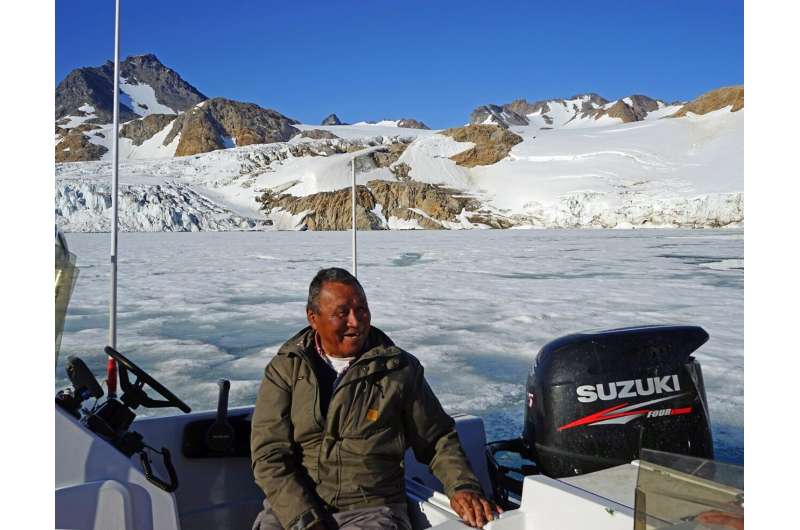A 'river of experience': How many ways of knowing inform a course on the climate crisis and actions

How can we educate about the climate crisis in a way that gives students the tools they need to move towards hopeful visions for the future?
A new kind of climate course has emerged from our collaboration at McGill University across the fields of environmental studies, biology, geoscience and science communication as we teamed up to explore this question.
course is an interdisciplinary, "whole-person" introduction to the climate crisis that includes an emphasis on individual and collective actions.
Designing a different kind of course
Designing the course required reaching beyond our disciplinary boundaries, to match the . For over two years, we consulted with researchers and educators across the campus and beyond.
The value of a holistic approach was inspired by discussions about Indigenous knowledge and pedagogy. We received early guidance and consultation around this by Kanien'kehá:ka Faithkeeper Ka'nahsohon Kevin Deer from Kahnawake, and , a and director of Reconciliation, Equity, Diversity and Inclusion at the City of Saskatoon.
We wove threads of throughout the course materials, lectures and assignments. For example, the importance of learning —central to Deer and Calvez's teachings—was a focus in our course through weekly reflective journaling . Deer has continued to be involved in the course as a guest lecturer and advisor.
Here are some of our guiding principles for the course.
1. Collaboration and multiple ways of knowing
We wondered: Do we begin with the or the ? Do we emphasize Indigenous knowledge, the science or socioeconomics of climate change? The problem or the possible solutions? What role should empowering our intellect versus our emotions play? as we collectively think about how to prepare the next generations for challenges ahead.
The solution for us was to value and welcome a diversity of disciplines, perspectives and approaches to understanding the climate crisis and taking climate action.
We have had lectures from academics in wide-ranging fields, including Earth system sciences, political science, biology, English literature, environmental studies, education, sustainability and more. Lectures also included and poetry readings.
We had visits by people working on climate solutions. Contributors have shared their expertise and lived experiences in relation to the climate crisis, including class visits from , president of the Inuit Circumpolar Council Canada, Indigenous youth front line activists, as well as other speakers from around the world. We heard from a national carbon emissions policy expert, a solar industry leader, a national journalist, and former NHL goalie former member of Parliament.
Weekly course materials ranged from to Potawatomi botanist Robin Wall Kimmerer's writing about mending our relationship with the Earth in , to .
In small workshops, guided by teaching assistants, students benefit from peer learning as they unpack topics or work on assignments together. Towards the end of the course, students collaborate to write a proposal for a climate action on campus. With the support of McGill's million-dollar , students can apply for seed funding and potentially see their climate project realized.
2. Bring your whole person
Academics are accustomed to approaching problems by speaking only from our formal expertise. But as researchers and teachers, we are learning if we —talents, skills, passions, lived experiences, positions of power and privilege—to the table, we can do far more.
This can help build a strong community, , and better engage with multidisciplinary course materials.
It can also help teachers and students to .
After a lecture on the that may have otherwise left students feeling despair about , we planned an interactive activity to bring the class towards a place of hopeful action.
Inspired by marine biologist Ayana Elizabeth Johnson's climate action Venn diagram, and using , students worked in small groups. They playfully supported each other to share the strengths they bring and to brainstorm possible actions.
Each declared a next feasible step forward that they could take on one of the ideas that came up.
3. Start from where you are
… and not where you think you "ought to" be. The climate crisis is . It can be daunting to know how to talk about it. There are multiple valid ways of approaching the problem, and there are real barriers surrounding many of the solutions people have identified. But as climate scientist , the most important step towards addressing the climate crisis is to talk about it.
Students join the course from diverse disciplines and contexts. Each year, we begin the course by asking students to put pen to paper to visualize and share their personal journey of engagement with the climate crises leading up to joining the course as a "."
We ask students to represent influential experiences, people, events and more in their rivers, and by doing so we acknowledge that we all come from different places. We then create a group model to help students envision their own learning path during and after the course.
Powerful hope and community
While the course was designed for undergraduates, these guiding principles work equally well outside of academic classrooms. We as instructors and climate experts have found powerful hope, community and paths to climate action in new ways by applying them in our own lives.
We invite readers to engage these principles and consider how you can collaborate across differences and contribute to climate action. What formed your river of experience with the climate crisis, and where do you want it to go?
Provided by The Conversation
This article is republished from under a Creative Commons license. Read the .![]()





















